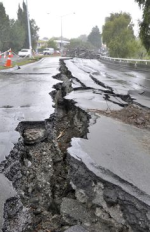What Are The Causes Of Earthquakes?
Earthquakes occur when energy stored in the Earth's crust is suddenly released, causing the ground to shake. This energy release happens due to movements of tectonic plates, volcanic activity, or human activities like mining and drilling.1. Main Causes of Earthquakes
1. Tectonic Plate Movements (Most Common Cause)
The Earth's outer shell, called the lithosphere, is made up of large plates that float on molten rock in the mantle. These tectonic plates constantly move, but when they get stuck due to friction, stress builds up.- When the stress becomes too great, the plates suddenly slip, releasing energy in the form of seismic waves—this causes an earthquake.
- The point where the earthquake starts underground is called the focus, and the spot directly above it on the surface is the epicenter.
2. Types of Plate Movements That Cause Earthquakes
There are three main ways tectonic plates interact:Convergent Boundaries (Colliding plates) – One plate slides under another (subduction), creating very powerful earthquakes (e.g., Japan, Indonesia).
Divergent Boundaries (Pulling apart) – Plates move away from each other, causing smaller earthquakes (e.g., Mid-Atlantic Ridge).
Transform Boundaries (Sliding past each other) – Plates move sideways, creating frequent but moderate earthquakes (e.g., San Andreas Fault in California).
2. Other Causes of Earthquakes
Volcanic Activity
- Magma moving inside a volcano can cause pressure to build up and crack the surrounding rocks.
- This leads to volcanic earthquakes, which are usually smaller but can still be destructive.
Human Activities (Induced Earthquakes)
- Mining & Drilling – Extracting oil, gas, or coal can weaken the Earth's crust and cause tremors.
- Dams & Reservoirs – Large amounts of water pressing down on faults can trigger earthquakes.
- Nuclear Testing – Underground nuclear explosions can generate seismic waves similar to natural earthquakes.
3. How Do Earthquakes Affect the Earth?
- Ground shaking – The most noticeable and damaging effect.
- Tsunamis – Underwater earthquakes can trigger massive ocean waves.
- Landslides & Avalanches – Unstable ground can collapse after an earthquake.
- Infrastructure damage – Buildings, roads, and bridges can be destroyed.
4. Measuring Earthquakes
- Richter Scale – Measures the magnitude (energy released).
- Mercalli Scale – Measures the intensity (damage and shaking felt).
Final Summary
Tectonic plate movements cause most earthquakes.Volcanic activity and human activities can also trigger them.
Earthquakes can cause tsunamis, landslides, and infrastructure damage.
Scientists use the Richter Scale to measure magnitude and the Mercalli Scale for intensity.
Would you like to know about earthquake safety tips?




